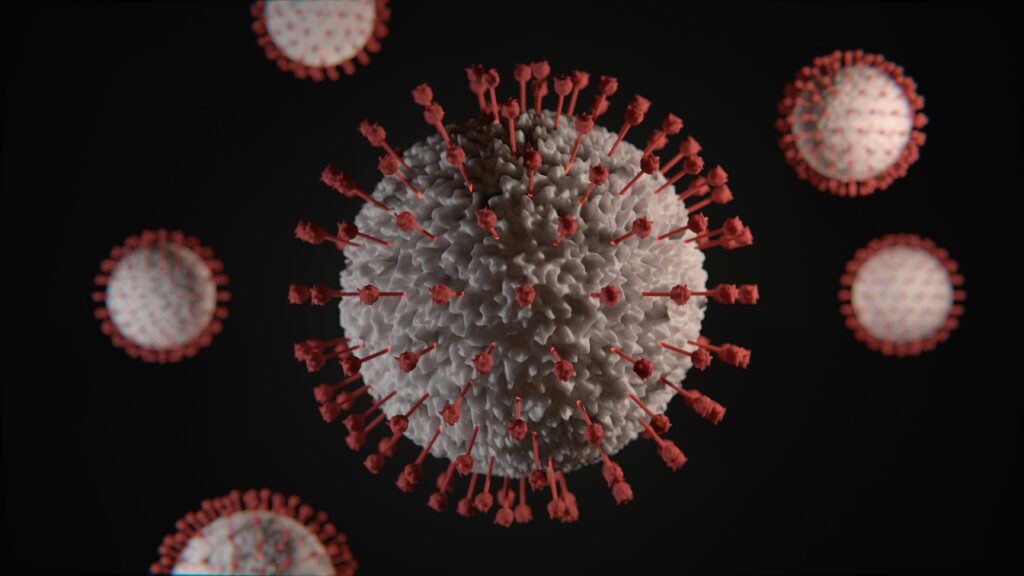Short summary: In the last decade Mars exploration has moved from reconnaissance to systematic science. Robotic rovers — NASA’s Curiosity and Perseverance, China’s Zhurong, and small aerial scouts like Ingenuity — are rewriting our picture of the Red Planet. This article surveys the most recent rover discoveries, explains why they matter for astrobiology and human exploration, and outlines what to watch next as sample-return and future missions close the loop.
Table of contents
- Why rovers matter now (and how robotic exploration has matured)
- The rover fleet: who’s on Mars and what they carry
- Curiosity: the veteran that keeps delivering surprises
- Perseverance: sample caching, biosignature hunting, and panoramic tomes
- Ingenuity: flight, concept validation, and pathfinding
- Zhurong and international contributions to Martian science
- The headline discoveries (what we’ve learned recently)
- Why organics and minerals matter — the astrobiological context
- What sample return will solve (and what it won’t)
- Tech innovations powering modern rover science
- How rover data reshape human mission planning
- Open questions and the next decade of Mars exploration
- How to follow the science responsibly (and where to find images/data)
- Final thoughts: from rocks to return samples — the science roadmap
1. Why rovers matter now (and how robotic exploration has matured)
Mars has been a subject of telescopic curiosity for centuries; robotic probes have visited for decades. But the recent generation of rovers represents a leap: mobile laboratories with instruments that can analyze rocks in situ, collect and cache samples for future return to Earth, and traverse increasingly varied terrains. These platforms unify remote sensing, in-situ chemistry, and targeted sample collection to answer high-priority scientific questions: Was early Mars habitable? Did it host prebiotic chemistry or life? And how can we prepare safe, efficient human missions?
Where earlier missions mapped and imaged, today’s rovers test explicit hypotheses about past water, organic chemistry, and environmental evolution. The result: a steady stream of targeted discoveries that push scientific questions into tractable territory.
2. The rover fleet: who’s on Mars and what they carry
At present, the principal active surface assets that have been generating headline results include:
- Curiosity (NASA, Mars Science Laboratory) — operating in Gale Crater since 2012 as a mobile geochemistry lab with instruments such as SAM (Sample Analysis at Mars) and CheMin. Curiosity has analyzed drilled rock powders for organics and complex chemistry.
- Perseverance (NASA, Mars 2020) — operating in Jezero Crater since 2021, carrying advanced cameras (Mastcam‑Z), SHERLOC and PIXL for fine-scale organics and mineralogy, and a coring system to collect and cache samples. Perseverance also supports the Ingenuity helicopter.
- Ingenuity (NASA) — an experimental rotorcraft demo that achieved powered flight on Mars, validating aerial scouting that amplifies rover science.
- Zhurong (China, Tianwen‑1 lander/rover) — operating in Utopia Planitia, contributing geological context, geomorphology, and sedimentary evidence interpreted by some teams as shorelines or deltaic features.
Each of these platforms carries a complementary toolkit — cameras, spectrometers, environmental sensors, and, critically, sample-handling hardware on Perseverance — allowing cross-comparison and multi-site learning.
3. Curiosity: the veteran that keeps delivering surprises
Curiosity’s longevity has paid scientific dividends. Originally tasked to assess ancient habitability in Gale Crater, the rover has provided one of the clearest records of long-lived wet environments on Mars. Its SAM instrument has analyzed rock powders and identified a variety of organic compounds and complex organics, some of the largest yet detected on Mars — findings that constrain the chemical richness of early Mars and the potential for prebiotic chemistry.
Beyond organics, Curiosity has mapped cyclical wet-dry conditions, clays, sulfates, and sedimentary structures that record environmental shifts over time. The rover’s persistent presence allows scientists to study both stratigraphy and spatial variability in a way that flyby missions cannot.
4. Perseverance: sample caching, biosignature hunting, and panoramic tomes
Perseverance was built explicitly to hunt for signs of past life and to collect samples for return. Jezero Crater was chosen because orbital data showed a preserved delta — an ancient sedimentary environment that is prime for trapping and preserving organics.
Perseverance’s suite (including SHERLOC and PIXL) works at microscales to detect mineral-organic associations and textural features consistent with biological or prebiological processes. The rover’s strategy: identify promising outcrops, acquire high-resolution imagery and spectral data, and then drill and cache cores in hermetically sealed tubes. Those carefully curated samples are the precious payload envisioned to be returned to Earth by future Mars Sample Return missions.
Perseverance also continues to generate striking panoramic mosaics and local context imagery that inform both science and mission planning; its photography has revealed unexpected rock textures and formations that prompt targeted follow-ups.
5. Ingenuity: flight, concept validation, and pathfinding
Ingenuity began as a technology demonstrator: a small helicopter designed to prove powered flight in the thin Martian atmosphere. Its success has been transformative. By flying ahead of Perseverance, Ingenuity has identified safe traverses, visually characterized outcrops from new angles, and enabled the rover team to plan more efficient drives.
Beyond its original demonstration goals, Ingenuity has completed dozens of flights — far surpassing expectations — proving that aerial reconnaissance expands the science-return per mission. The lessons learned are already influencing design choices for future aerial vehicles that could carry more sophisticated instruments.
6. Zhurong and international contributions to Martian science
China’s Zhurong rover, working in Utopia Planitia, has contributed valuable geomorphological evidence that some researchers interpret as ancient shoreline features. Zhurong’s observations help expand the geographic sampling of Mars — important because regional geology can vary dramatically, and global models of Mars’ history require data from many sites.
This international participation enriches the scientific conversation: independent teams apply differing instruments and expertise, and cross-mission comparisons help validate interpretations and refine global-scale geological models.
7. The headline discoveries (what we’ve learned recently)
Recent months and years have produced an avalanche of focused findings. Here are the ones shaping headlines and scientific agendas right now:
- Curiosity’s detection of complex and comparatively large organic molecules. Analyses of drilled rock powders indicate organics that suggest Mars preserved more complex chemistry than previously observed. This expands the palette of potential prebiotic molecules and constrains models for organic production and preservation.
- Perseverance’s high-resolution mosaics and unusual rock textures. The rover’s panoramic images and targeted close-ups have revealed intriguing rock morphologies, from spherule-rich clasts to ‘leopard‑spot’ textures and recently publicized helmet-shaped rocks that spark both scientific curiosity and public imagination.
- Evidence for ancient shorelines/sea-level features from Zhurong and orbital data. Combined rover and orbital mapping has strengthened the case that northern lowlands could have hosted large bodies of water in Mars’ deep past.
- Robust sample-caching progress toward Mars Sample Return. Perseverance’s drilled cores, stowed in sealed tubes, represent the most important near-term step toward returning pristine Martian materials to Earth laboratories where sensitive and diverse analyses can be carried out.
- Ingenuity’s flight record and operational role. The helicopter’s long flight list and aerial scouting have fundamentally changed how teams think about exploring diverse terrains effectively.
Each of these discoveries refines the basic story of Mars: an early planet with abundant liquid water, dynamic chemistry, and environments capable of preserving complex organic molecules. Whether these molecules are biological in origin is a much higher bar — one that sample return aims to address.
8. Why organics and minerals matter — the astrobiological context
Organic molecules are the carbon-containing building blocks that life on Earth uses. Their presence on Mars does not prove life; organics can form through abiotic processes (e.g., meteoritic delivery, geochemical synthesis). Nonetheless, the type, abundance, and context of organics give critical clues.
For example, mineral matrices like clays and silica can trap and protect organics from radiation and oxidation. Finding organics within finely layered sedimentary rocks, especially in a deltaic setting, raises the scientific stakes because these are the same contexts on Earth where life, or prebiotic chemistry, can be preserved over geological time.
Therefore, when Curiosity and Perseverance report complex organics or mineral associations consistent with preservation, they are effectively highlighting the most promising locales for deeper, laboratory-grade analyses — which is why sample return is so consequential.
9. What sample return will solve (and what it won’t)
No rover can replace Earth-based labs. The instruments on rovers are powerful, but limited by mass, size, and power constraints. Returning samples to Earth allows scientists to apply the full battery of sensitive, high-resolution instruments (isotope ratio mass spectrometers, electron microscopes, biomarker labs) that can detect subtle chemical or structural signatures of past life.
Mars Sample Return (a multi-mission campaign under planning and development) aims to return carefully curated cores drilled by Perseverance. These samples will be analyzed under strict contamination controls to discriminate between terrestrial contamination, meteoritic organics, abiotic organics, and possible biological signatures.
What sample return won’t immediately do: even with returned material, proving past life will be contentious and require multiple, independent lines of evidence — chemical, morphological, isotopic, and contextual. The global scientific community will debate and validate any extraordinary claims. But returned samples will raise the resolution of the debate dramatically.
10. Tech innovations powering modern rover science
Several technical advances have enabled recent discoveries:
- Autonomous navigation and hazard avoidance let rovers cover kilometers per year and access varied outcrops.
- Miniaturized, high‑sensitivity instruments (e.g., Raman spectrometers, laser desorption mass spectrometers) can detect organics and mineralogy at microscales.
- Aerial scouts and drones provide new perspectives for mapping and traverse selection.
- Sample handling and caching mechanics keep specimens uncontaminated and traceable for later retrieval.
These engineering gains also inform future mission design — from sample-return mechanics to human-exploration logistics.
11. How rover data reshape human mission planning
Human mission architects pay close attention to rover science for three reasons:
- Resource identification. Rovers map water‑derived minerals and ice proxies that could indicate resources for in-situ resource utilization (ISRU) — a potential game-changer for long-duration human missions.
- Hazard mapping. Traverses, dust loads, and terrain variability measured by rovers and aerial scouts inform landing site safety and EVA planning.
- Science prioritization. Robotic reconnaissance helps prioritize regions where human sampling would have the highest scientific return.
In short, rovers are scouts — their discoveries narrow search areas, identify high-value targets, and reduce risk for subsequent crewed missions.
12. Open questions and the next decade of Mars exploration
Despite progress, large questions remain:
- Were the organics formed abiotically or biologically? Answering this requires returned samples and cross-disciplinary analysis.
- What was the extent and duration of Mars’ ancient water bodies? Global mapping and stratigraphic work continue.
- How widespread are habitable microenvironments? Localized chemistry may be common, but we need broader sampling.
The next decade will bring complementary missions — sample-return elements, the potential for more aerial explorers, and possibly new landers from international partners — all directed toward resolving these questions.
13. How to follow the science responsibly (and where to find images/data)
If you want to stay current and use authoritative sources, start with mission web pages and primary-release channels:
- NASA’s Mars mission pages and the Jet Propulsion Laboratory (JPL) site for Curiosity and Perseverance updates.
- Peer-reviewed journals (Science, Nature, PNAS) for in-depth analyses and data papers.
- Press releases from mission science teams for timely context; cross-check with primary sources before sharing headlines.
High-resolution images and mosaics are typically released by JPL and mission science teams; these make excellent visual hooks for blog posts (credit the source when publishing).
14. Final thoughts: from rocks to return samples — the science roadmap
Rover science has matured from astonishing engineering demonstrations to hypothesis-driven Earth-analog science. Curiosity, Perseverance, Ingenuity, and Zhurong together form a diversified approach to understanding Mars’ past and its potential to have hosted prebiotic chemistry or life. The headline discoveries — larger organics, intriguing textures, possible shoreline features, and extensive sample‑caching progress — are not singular proofs but key steps in a methodical scientific campaign.
The most important moment may still lie ahead: when carefully curated Martian samples finally arrive in Earth labs where detection thresholds, contamination controls, and cross-disciplinary expertise can decisively push our understanding. Until then, the rover fleet will continue to surprise, guide, and teach us how to search better.
Want this converted into WordPress-ready HTML, a 700–900 word summary for social sharing, or a set of 3 suggested images with captions and alt text? Tell me which and I’ll prepare the next step.




